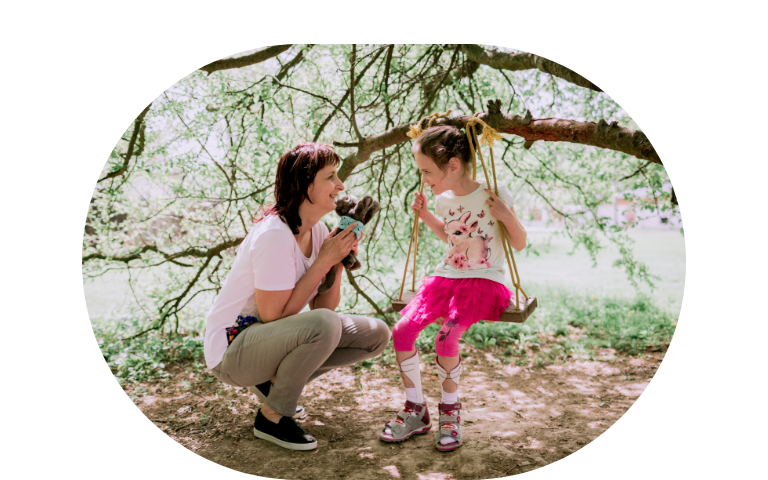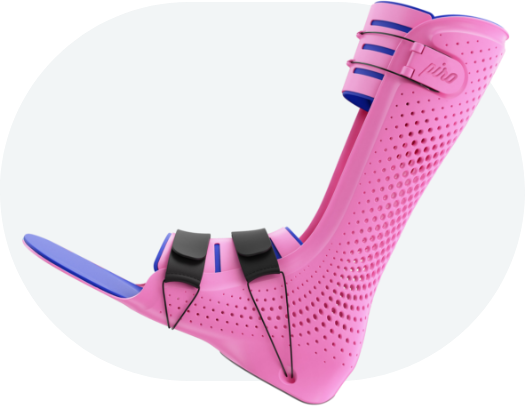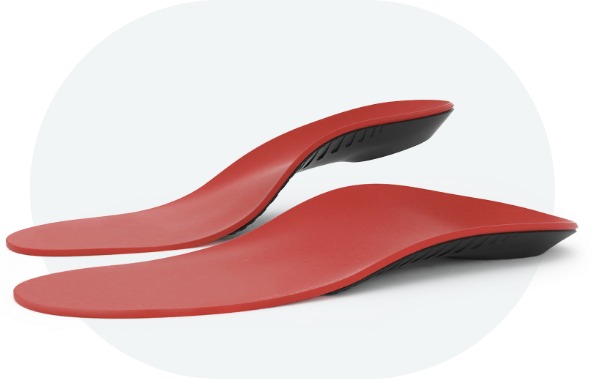Take care of your little one with the right treatment


Paediatric foot and ankle conditions
Across the UK, thousands of children suffer from conditions such as:
- Cerebral palsy
- Neurological conditions
- Multiple sclerosis
- Spina bifida
- Tetraplegia
- Knee hyperextension
- Sagittal plane stiffness
- Crouching
- Non-ambulatory
- Overpronation
- Low tone pronation
- High tone pronation/supination
- Ankle injuries
- Toe walking
- Flat foot
- Drop foot
- Plantar fasciitis
These kinds of conditions can result in:
- Mobility, balance and alignment issues
- Physical pain because of muscle control issues, abnormal posture and stiff joints
- Sleep and eating disorders
- Struggling to walk with confidence
- Feeling left out because they are missing out on day-to-day kids’ activities
- Discrimination
While these conditions affect your child, they affect you as a parent too. You may wonder what the future holds for your child and what their life will be like. It is important to find the correct solution that keeps them happy, comfortable and able to be confident, independent and achieve personal milestones.
Our treatment recommendations

AFOs and SMOs
AFOs and SMOs help improve children’s mobility and control when they have conditions such as:
- Cerebral palsy
- Neurological conditions
- Multiple sclerosis
- Spina bifida
- Tetraplegia
- Overpronation
- Low tone pronation
- High tone pronation/supination
- Ankle injuries
- Knee hyperextension
- Sagittal plane stiffness
- Crouching
- Non-ambulatory
- Toe walking
- Flat foot
- Drop foot
- Plantar fasciitis
Traditional orthoses unfortunately tend to be bulky, heavy and uncomfortable. Instead of heavy orthoses that are a struggle to fit, Invent Medical created Piro. The award-winning AFOs and SMOs let children move freely and boosts their confidence as they are comfortable, thin, light, discreet and 100% personally designed to their foot, taste and lifestyle.

Foot orthotics
Foot orthotics can offer support and relieve discomfort, strain and stress on the body from conditions such as:
- Flat foot
- Drop foot
- Sagittal plane stiffness
- Overpronation
- Cerebral palsy
- Ankle injuries
- Plantar fasciitis
- Posterior tibial tendon dysfunction
- Spina bifida
- Multiple sclerosis
The current market, however, is oversaturated – making it harder to decide which product will help your child’s condition, without spending a small fortune. That’s why Invent Medical created 8sole. The award-winning foot orthotics help your child step up their performance, control and healing process, and are designed 100% custom-made and cost-effectively to stand the test of time.
An orthotics process that has never been easier
Your child is scanned directly by your chosen clinician.
You and your child will work with the clinician to modify and align the orthosis.
Once 100% custom designed to your child, the orthosis is ordered.
The orthosis is printed and cooled, and then dyed or printed.
The orthosis will then be with you within two weeks.
How long will my child need to wear the AFO each day?
AFOs can be worn all day and seamlessly fit into your child’s daily routine.
Are there any specific exercises or stretches my child should do to complement AFO use?
Supplemental exercises can enhance the benefits of AFOs. Your child’s physiotherapist will work with you both on this and suggest what’s best.
What are the signs that an AFO doesn’t fit properly? How often should AFOs be checked or adjusted?
Properly fitted AFOs are critical for effectiveness and comfort. If there are very red marks or chafing, this could be a sign the AFO does not fit properly. Your child will need to go for regular check-ups and adjustments as they grow and their condition changes. If your child is going through a growth phase and their AFO feels a bit tight, speak to their orthotist or physiotherapist.
What is the process for replacing the AFOs as my child grows?
When your child’s foot reaches the end of the AFO, or they’re going up a shoe size, you need to get them checked, adjusted or replaced if necessary.
Are there any support groups or resources for parents of children with similar conditions?
Connecting with other parents can offer valuable insights and support, and there are a growing number of social media groups available.